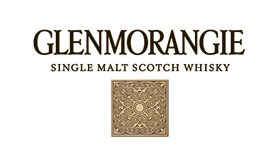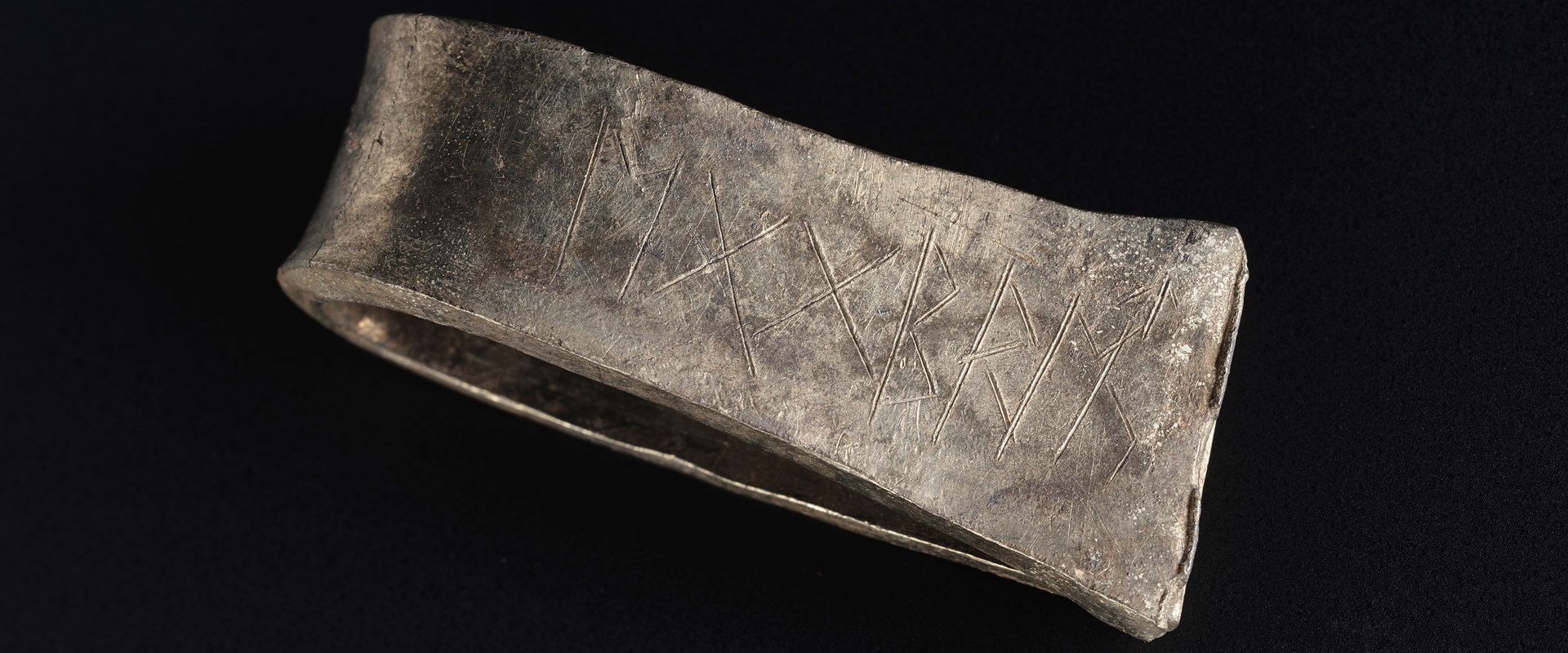#GallowayHoard
First research into the Galloway Hoard has uncovered the name of one of the famous treasure’s original owners. Examination of Anglo-Saxon runic inscriptions on the Hoard’s silver arm-rings have revealed the name “Ecgbeorht” or, in its more modern form, Egbert.
Dr Adrian Maldonado, Glenmorangie Research Fellow at National Museums Scotland, said:
“It’s really exciting to be able to reveal the first major research finding from the conservation of the Galloway Hoard, a message left by one of the individuals who deposited the hoard 1100 years ago.
We don’t know any more about Egbert than his name right now but there’s something really tantalising about connecting the Galloway Hoard with a named person. Egbert is a common Anglo-Saxon name, and with more research on the rest of the contents of the hoard, we will be able to narrow down its dating and suggest some candidates from the historical record.
If the hoard belonged to a person or group of Anglo-Saxon speakers, does it mean they were out raiding with other Vikings? Or that these Viking hoards were not always the product of Scandinavian raiders? There are other explanations, but either way this transforms our thinking on the ‘Viking Age’ in Scotland.
These inscriptions are evidence that identity was complex in the past, just as it can be today. In Early Medieval Scotland, we have inscriptions in five different scripts (Latin, ogham, Pictish symbols, Scandinavian and Anglian runes) making it a diverse and multilingual era. Place-names in British, Gaelic, Norse and Old English were being coined in South West Scotland around the time of the Galloway Hoard. The sea was more like a motorway, allowing people to communicate across linguistic boundaries, exchanging ideas and objects. This is just a glimpse of how the Galloway Hoard will continue to challenge our thinking as conservation continues.”
The runes were read by Dr David Parsons of the University of Wales. He said:
“Five of the silver arm-rings have runic inscriptions scratched into them which may have functioned as labels identifying distinct portions of the hoard, perhaps recording the names of the people who owned and buried them. Arm-rings of this sort are most commonly associated with Viking discoveries around the Irish Sea coastlands. Yet these runes are not of the familiar Scandinavian variety common around this date on the nearby Isle of Man, but of a distinctively Anglo-Saxon type. And while several of the texts are abbreviated and uncertain, one is splendidly clear: it reads Ecgbeorht, Egbert, a common and thoroughly Anglo-Saxon man’s name.
There is some reason, therefore, to suspect that the Galloway ‘Viking’ Hoard may have been deposited by a people who, to judge by name and choice of script, may have considered themselves part of the English-speaking world. It is even possible that these were locals: Galloway had been part of Anglo-Saxon Northumbria since the early eighth century, and was referred to as the ‘Saxon coast’ in the Irish chronicles as late as the tenth century.”
Dr Parsons will be discussing the findings along with other surviving early medieval inscriptions from south-west Scotland in ‘The Riddle of the Runes’, the 17th annual Whithorn Lecture at the Wigtown Book Festival on Saturday 5 October.
As well as the arm-ring with the full name of Egbert, four others have runic inscriptions. Three appear to be abbreviated names, probably also Old English, whilst the fifth has still to be deciphered, but all are in Anglo-Saxon runes
The Galloway Hoard brings together the richest collection of rare and unique Viking-age objects ever found in Britain or Ireland. It is of international significance and will transform our understanding of this period of Scottish history. Buried at the beginning of the tenth century, it comprises in excess of 100 gold, silver and other items, some of which are unique.
The Hoard was discovered in 2014. Following its acquisition by National Museums Scotland in 2017, the Hoard is currently being conserved and researched at the National Museums Collection Centre in Edinburgh.
An exhibition of the Galloway Hoard will be displayed at the National Museum of Scotland in May, and will tour thereafter to Kirkcudbright Galleries, The McManus: Dundee’s Art Gallery and Museum and Aberdeen Art Gallery thanks to funding from the Scottish Government.
Following the tour part of the Galloway Hoard will be on long-term display at the National Museum of Scotland in Edinburgh with a significant and representative portion of the Hoard also displayed long-term at Kirkcudbright Galleries.
Hamish Torrie, Corporate Social Responsibility Director at The Glenmorangie Company, said:
“This latest reveal from the Galloway Hoard adds yet another layer of understanding as to the make-up of the early people of Scotland and we are delighted that this research can benefit from our support.”
The Glenmorangie Research Partnership was launched in 2008 and over three successive phases has revealed many new insights into the Early People of Scotland. The current phase of research focusses on the formation of the medieval kingdom of Scotland, examining the archaeological evidence from the 9th to 12th centuries which underpins the formation of the nation state of Scotland. The Glenmorangie Research Partnership enables researchers to explore objects and evidence of the period, bringing new knowledge and research techniques to bear on a critical period in Scottish history.
Galloway Hoard exhibition tour dates:
- National Museum of Scotland, Edinburgh, May – November 2020
- Kirkcudbright Galleries, Kirkcudbright, December 2020 – September 2021
- Aberdeen Art Gallery, October 2021 – January 2022
- The McManus: Dundee’s Art Gallery and Museum, February – late August 2022




Further information and images from:
Bruce Blacklaw, National Museums Scotland Press Office on 0131 247 4165 or b.blacklaw@nms.ac.uk
Notes to editors
-
About the Galloway Hoard
The Galloway Hoard brings together the richest collection of rare and unique Viking-age objects ever found in Britain or Ireland. It is of international significance and will transform our understanding of this period of Scottish history.
The Galloway Hoard comprises in excess of 100 gold, silver and other items from the Viking Age. It was buried at the beginning of the tenth century, although some of the items within the Hoard date from an earlier period.
The bulk of the find is a rich Viking-age hoard of silver jewellery and ingots. However, it also contains an outstanding range of exceptional precious metal and jewelled items including a rare gold ingot, a gold bird-shaped pin and a decorated silver-gilt cup of Continental or Byzantine origin. The Galloway Hoard is unique in bringing together a remarkable variety of objects in one discovery, hinting at hitherto unknown connections between people across Europe and beyond.
- About National Museums Scotland
National Museums Scotland is one of the leading museum groups in the UK and Europe and it looks after collections of national and international importance. The organisation provides loans, partnerships, research and training in Scotland and internationally. Our individual museums are the National Museum of Scotland, the National Museum of Flight, the National Museum of Rural Life and the National War Museum. The National Museums Collection Centre in Edinburgh houses conservation and research facilities as well as collections not currently on display.
-
Twitter: @NtlMuseumsScot
-
Facebook: facebook.com/NationalMuseumsScotland
-
Instagram: @NationalMuseumsScotland
-
Bheireadh Oifis nam Meadhanan eadar-theangachadh Gàidhlig den bhrath-naidheachd seachad do bhuidhinn mheadhanan bharantaichte. Cuiribh fios do dh'Oifis nam Meadhanan airson bruidhinn air cinn-latha freagarrach.
-
About Glenmorangie: Glenmorangie Single Malt Scotch Whisky originates in the Scottish Highlands where, at the Glenmorangie Distillery, it is distilled in the tallest malt whisky stills in Scotland for a purer spirit, expertly matured in the finest oak casks for great depth, and perfected by the Men of Tain. The Distillery was founded in 1843 and is renowned as a pioneer in its field, uniting tradition with innovation. #Glenmorangie
-
About the partnership
Since 2008, the award-winning Glenmorangie Research Project on Early Medieval Scotland has been generating exciting new research on this important period of Scotland’s past. The project was born when The Glenmorangie Company was inspired by the Hilton of Cadboll stone, on display in the National Museum’s Early People gallery. The stone was found near the Glenmorangie distillery in Tain, Easter Ross and has been used as inspiration for the company’s brand emblem

